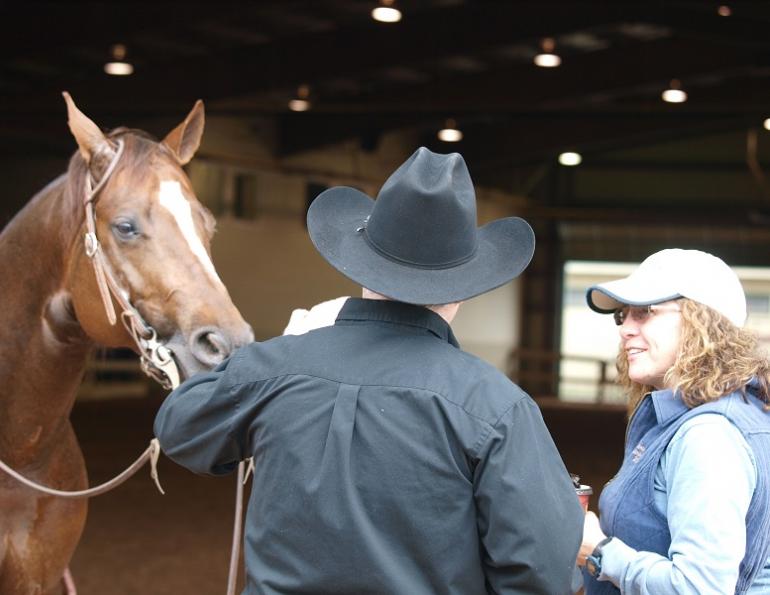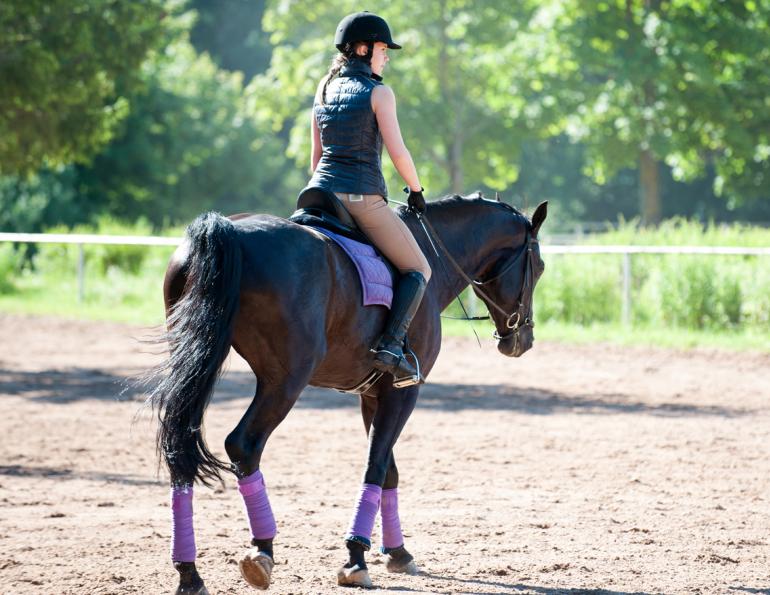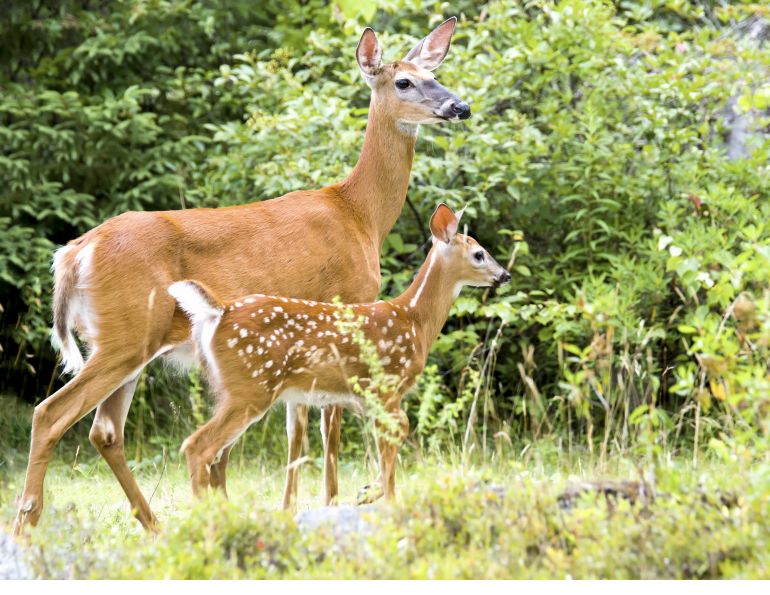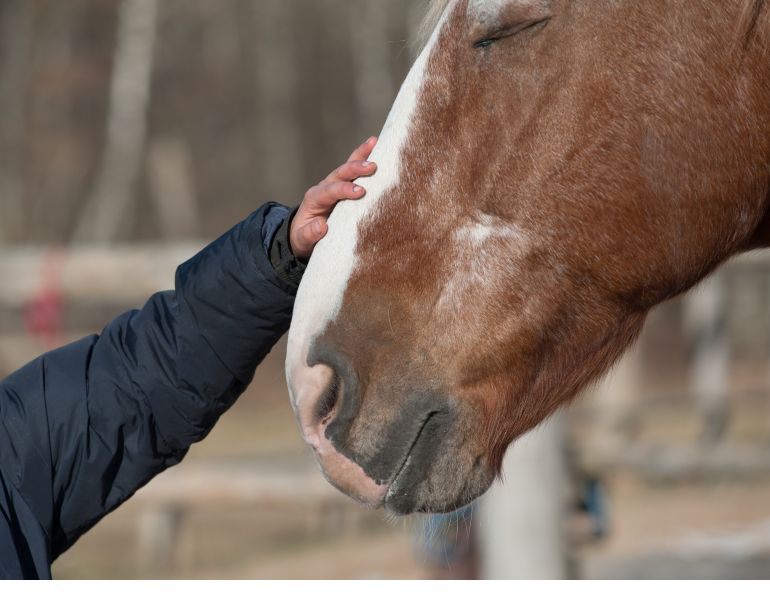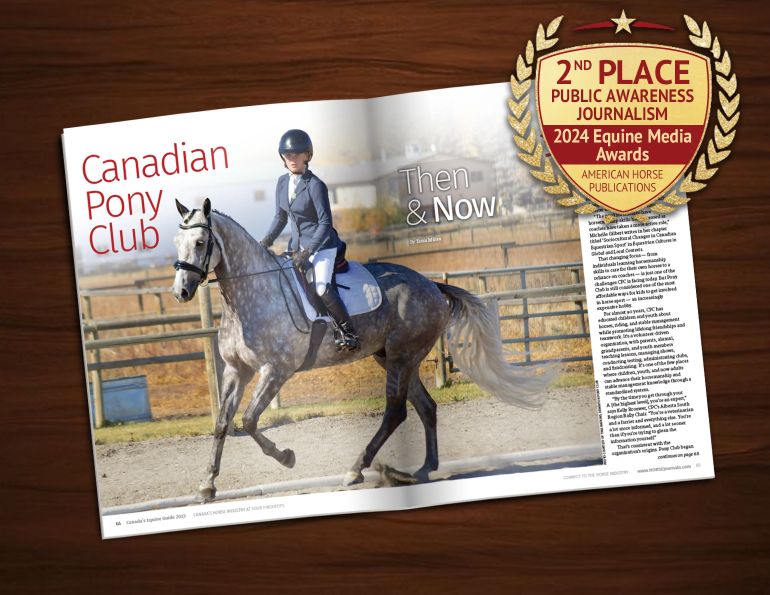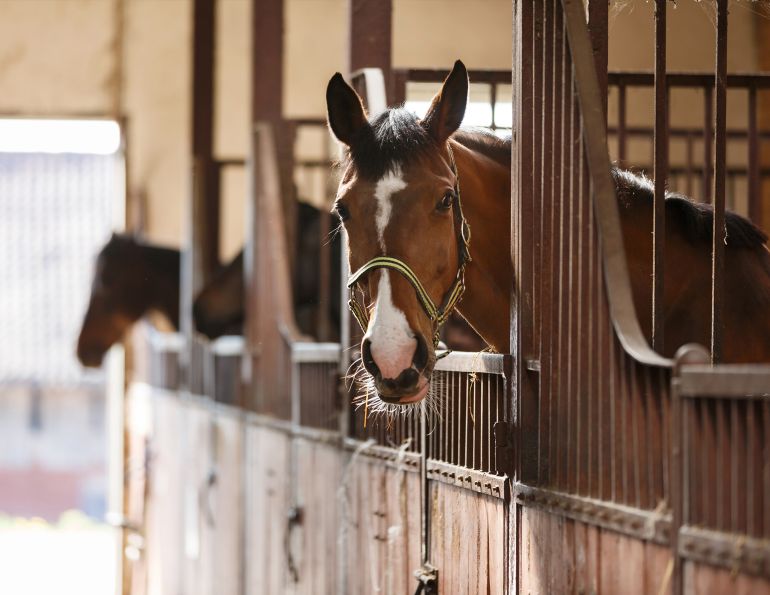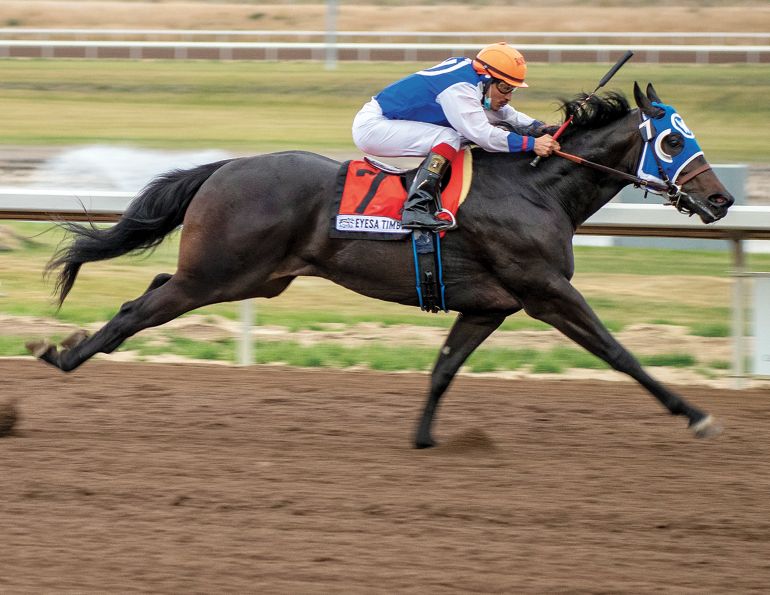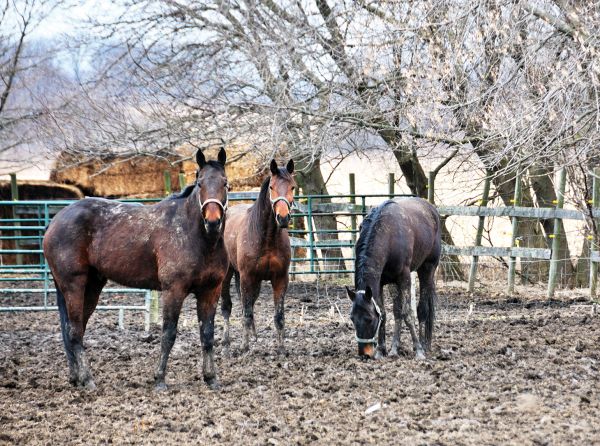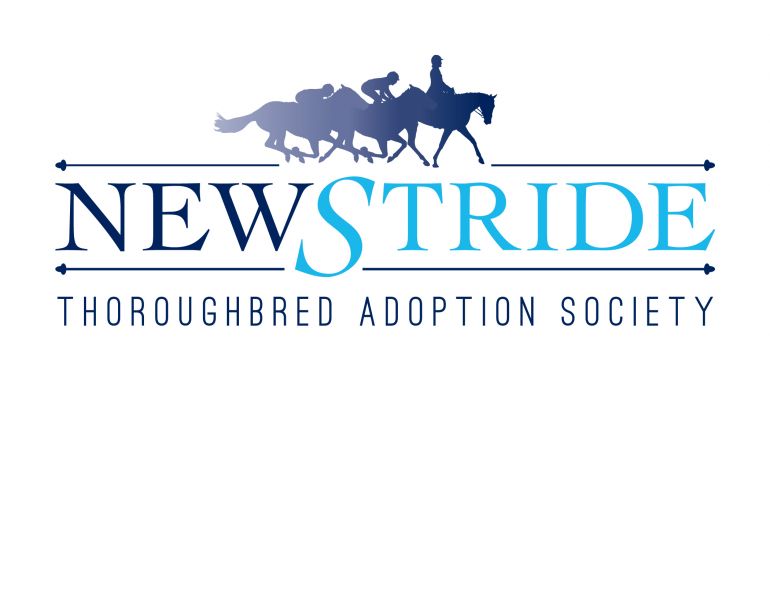Coming on the heels of the COVID-19 pandemic, the survey can serve as an important benchmark in the health of the equine industry now and in the future.
American Horse Publications
Despite the challenges posed by the COVID-19 pandemic, the equine industry in the United States is stable based on the number of horses owned/managed, according to the results of a survey by American Horse Publications (AHP) sponsored by Zoetis. The survey, which includes responses from 7,267 horse owners/managers, found that the top three issues facing the industry are land use issues, horses in transition or at risk, and the increased cost of horse-keeping. And, while vaccination rates are stable, survey respondents indicated they are following updated deworming recommendations and adjusting their frequency if needed.
“The results from the 2021 AHP Equine Industry Survey reveal overall stability in the U.S. equine industry in spite of unique challenges posed by COVID-19,” said Jill Stowe, Ph.D., professor of agricultural economics at the University of Kentucky, who analyzed the data and consulted on the results. “Based on respondents’ input on management and issues facing the industry, our leaders have helpful information to guide strategic planning and decision-making for the long-term benefit of the industry.”
The survey, which was conducted from January 18 through April 9, 2021, has three primary objectives: to gauge participation trends and management practices in the U.S. equine industry; to identify critical issues facing the equine industry as perceived by those who own or manage horses; and to better understand approaches to horse health care. AHP conducted similar surveys in 2009-2010, 2012, 2015 and 2018.
Stability Through the Pandemic
The average respondent owns/manages about six horses. 75.2 percent of respondents indicate that the number of horses they currently own/manage is the same as in 2020, and 10.4 percent own/manage more horses than they did in 2020. When asked about future expectations of ownership, 73 percent expect to own/manage the same number of horses in 2022, 17.3 percent expect to own/manage more horses, and 9.7 percent expect to own/manage fewer horses. Comparing this to the 2018 survey, we see an increase in expected stability regarding the number of horses owned/managed.
Horse Ownership
Growth in the number of horses owned/managed is more prevalent among respondents in the youngest age group as compared to the oldest group. Similar to previous studies, the frequency of owning/managing more horses in the survey year (2021) than in the previous year (2020) is decreasing with age; 21.8 percent of respondents in the 18-24 age category report owning/managing more horses in 2021 than in 2020, while only 5.4 percent of respondents in the 65-plus age category report owning/managing more horses. This pattern is also consistent with expectations on horse ownership/management one year in the future: 31.1 percent of respondents in the 18-24 age category expect to own/manage more horses in 2022 than they do this year, while only 10.2 percent of respondents in the 65-plus age category report the same expectation.
Event Participation
Survey participants indicate that they expect to compete in an average of 4.3 events in 2021, which is less than the 5 competitions reported in the 2018 study. More than 45 percent of the respondents do not plan on competing at all in 2021, up from 38.7 percent in 2018.
Horse-keeping Costs
Feed (including both hay and concentrates) continues to be the most frequently identified area in which horse-keeping costs have increased. This is followed by costs of veterinary services (41 percent) and animal health products (39 percent), which are stable from the 2018 study.
However, the cost of barn supplies has significantly increased since 2018, from 12.2 percent to 22 percent. Frequently mentioned sources of increased costs in the “other” category were fencing, building materials and insurance. In addition, 22.2 percent of respondents identified fuel/transportation as a primary source of increased horse-keeping costs. It is important to note that if this survey had been conducted later in 2021, when there was a sharp increase in gas and lumber prices, this percentage may have been higher. The rise in horse-keeping costs could force businesses to raise prices even if they don’t want to.
Looking at how to accommodate for horse-keeping costs, most respondents reported they will reduce expenditures in other areas of their lives (60 percent), attend fewer competitions (22.2 percent) and pursue other income opportunities (21.3 percent).
Issues Facing the Equine Industry
The most frequently selected issue facing the equine industry was land use issues (43.5 percent), followed closely by horses in transition or at risk (43.1 percent), and cost of horse-keeping (42.8 percent). Frequently mentioned issues in the “other” category include animal rights activists, competition costs, liability and over-regulation.
Although there are overarching issues that span the entire equine industry, there are certain issues of heightened concern in particular areas of the country. For example, zip code regions 4 (Indiana, Kentucky, Michigan and Ohio) and 7 (Arkansas, Louisiana, Oklahoma and Texas) had the highest percentage of respondents selecting illegal medication of performance horses and ineffective welfare laws. Respondents in zip code region 3, which includes Alabama, Florida, Georgia, Mississippi and Tennessee, were most likely to select the practice of soring as a key issue.
Horse Health Care
Veterinarians administer vaccines for 65.4 percent of respondents’ horses, continuing a gradual upward trend from previous surveys (58.2 percent in 2012, 61.4 percent in 2015, and 63 percent in 2018). The percent of respondents who administer the vaccines themselves continues to decrease, standing at 28.5 percent compared to 29.7 percent in 2018, 31.5 percent in 2015, and 34.7 percent in 2012.
Of vaccination-related issues discussed with the veterinarian, the most common is what the horse is being vaccinated for (63.7 percent), followed by American Association of Equine Practitioners (AAEP) vaccination recommendations (40.6 percent). Since the 2018 survey, horse owners and veterinarian conversations surrounding vaccination protocols have decreased.
More than 72 percent of respondents indicate that their veterinarian is the leading influence for where they purchase their equine vaccines, with price being the second leading influence (13.3 percent).
Deworming
Respondents indicate that they are adhering to new deworming recommendations. The percentage of horse owners who are deworming 1 to 3 times a year has increased, while the percentage of those who are deworming up to 6 times a year has decreased.
More than half of respondents (54.4 percent) indicate their veterinarian is involved in developing their horses’ deworming schedules — the first time this figure has eclipsed the 50 percent mark. Survey results indicate that just under 60 percent of respondents report their veterinarians recommend a fecal egg count test, declining from nearly 78 percent in 2018.
Respondents indicate that they purchase dewormers from chain stores, local feed stores, and online. Veterinarians are reported to have the most influence on dewormer purchasing decisions and their role has become more prominent than indicated in previous studies.
Timing of Surveys Can Be Meaningful
The 2021 AHP Equine Industry Survey continues to build upon the first four surveys (2009-2010, 2012, 2015, and 2018) to help understand dynamics within the equine industry. The initial survey was conducted as recovery from the Great Recession in 2008 and 2009 was underway, and the following two surveys were able to track recovery in the equine industry.
“The timing of the 2021 survey is fortuitous because it comes on the heels of a worldwide economic slowdown due to the global COVID-19 pandemic — a health event not seen in more than a century,” said Dr. Stowe. “Accordingly, it can serve as an important benchmark in the health of the equine industry now and in the future.”
About the Survey
The 2021 survey was limited to those who currently own or manage at least one horse, are 18 years of age or older, and live in the United States. The survey collected 8,029 responses, of which 7,267 were useable.
“Zoetis is proud to support the ongoing work of American Horse Publications and its significant efforts to understand the trends impacting our industry,” said Jen Grant, head of marketing for U.S. equine, Zoetis. “To see a stable U.S. horse population despite the many challenges of COVID-19 is a testament to the powerful connection between horses and their caregivers — a bond we are committed to nurturing now and into the future through our trailblazing portfolio of horse care products.”
“AHP is grateful for its partnership with Zoetis to provide ongoing and vital data on the trends in horse care, management and welfare of horses in the U.S.,” said Christine W. Brune, AHP executive director. “We appreciate the cooperation of our members in promoting the survey and the expert analysis of Dr. Jill Stowe.”
Survey Key Conclusions
- Continuing the trend from previous studies, the U.S. equine industry appears to remain fairly stable based on the number of horses owned/managed.
- More than 85 percent of respondents have experienced an increase in horse-keeping costs.
- Based on results from this year’s survey, the top three issues currently facing the equine industry are land use issues, horses in transition or at risk, and the cost of horse-keeping.
- There is a continued increase in the prominence of the role of veterinarians in providing routine health care, such as vaccinating and deworming. While there are no significant differences in vaccinating horses compared to the previous survey, this survey shows a continuing trend in which respondents are deworming less frequently.
The survey indicated that about 20 percent of horse owners/managers used telemedicine to provide equine health care services during the COVID-19 pandemic. This may become a regular tool for improving equine health.
Photo: iStock/Bear2016




